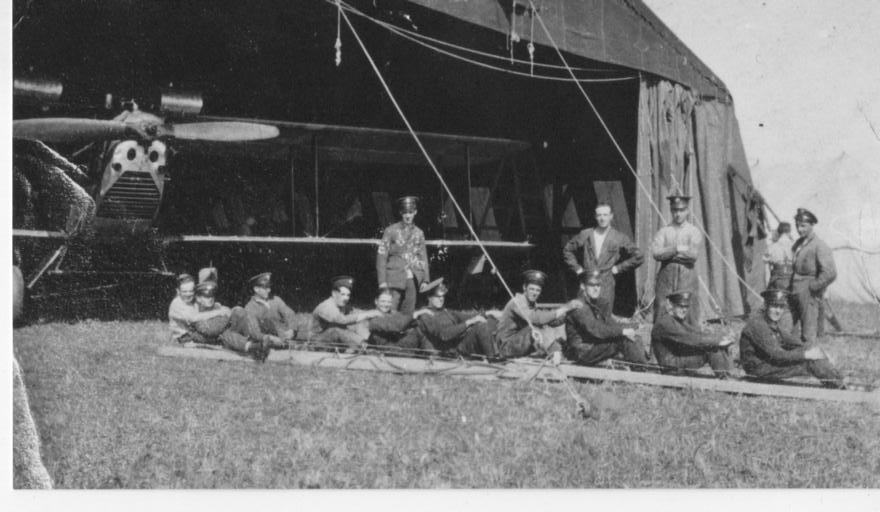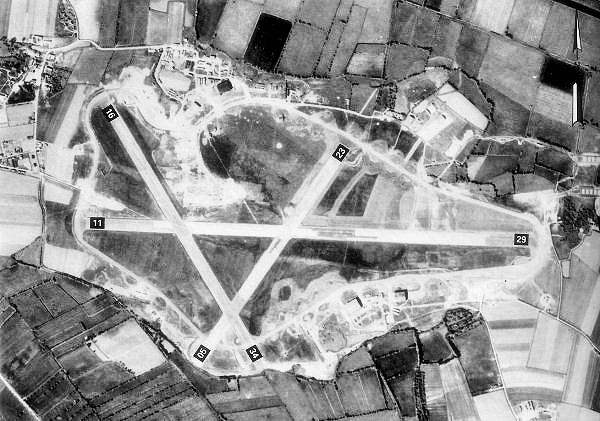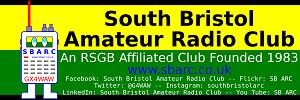New QRZ Page
As part of our activation of Westonzoyland Airfield on Saturday 1 April 2023 and Sunday 2 April 2023, we are putting the finishing touches to our QRZ page for the Special Event Station. Many thanks to Greg 2W1BUF for his research into the operational history of the airfield and for preparing and managing the page. There is still a little bit of formatting and some image integration to work out but the page should look something like the layout below…
GB0WZL
GB0WZL is operated by South Bristol Amateur Radio Club as a Special Event Station from the former RAF Westonzoyland as part of Airfields on the Air.
Airfields on the Air (AOTA)
Airfields on the Air is an annual event in the United Kingdom, running from the 1st of January to the 31st of December each year. It is not a contest; it is a celebration of the hard work and sacrifices made by the personnel of the Royal Air Force both in the past, and the present day. It is administered by the Royal Air Force Amateur Radio Society (RAFARS).
In addition to ad-hoc activations throughout the year, the main activity period for the 2023 event will be between the 1st and 16th of April, covering two full weeks / three full weekends of activity. Typically the first full weekend in April is when most activity occurs.
RAF Westonzoyland
 In the 1920s, a large anti-aircraft gunnery range was established at Watchet on the north Somerset coast. In order to give the gunners on the range targets upon which to practice, the Air Ministry established a summer practice camp in a large field just to the east of Westonzoyland village. The first aircraft to arrive were the Hawker Horsleys of No.100 Squadron on detachment from their home airfield of RAF Spitalgate near Grantham, for several weeks in the summer of 1926, who towed banners on long lengths of cable into the air for the Watchet gunners to practice their aim on. This exercise was so successful that No.100 Squadron returned every summer for the next few years.
In the 1920s, a large anti-aircraft gunnery range was established at Watchet on the north Somerset coast. In order to give the gunners on the range targets upon which to practice, the Air Ministry established a summer practice camp in a large field just to the east of Westonzoyland village. The first aircraft to arrive were the Hawker Horsleys of No.100 Squadron on detachment from their home airfield of RAF Spitalgate near Grantham, for several weeks in the summer of 1926, who towed banners on long lengths of cable into the air for the Watchet gunners to practice their aim on. This exercise was so successful that No.100 Squadron returned every summer for the next few years.
In 1929, the Anti-Aircraft Co-operation Flight, based at Biggin Hill, took over responsibility for the summer camp, and returned every year until 1936, flying the Westland Wallace. Renamed No.1 Anti-Aircraft Unit in early 1937, the unit returned in the summer of the same year with their Wallace aircraft, and again in 1938, but by the summer of 1939 their Wallaces had been replaced with Hawker Henleys.
With the outbreak of the Second World War, No.16 Squadron arrived with their Westland Lysanders, with the greater remit of Army Co-operation in addition to their responsibilities to provide target practice for the Watchet gunners. In August 1940, with the threat of imminent invasion, they added coastal patrols to their roster. With activity at an all-time high, the former summer camp became a fully established RAF station in September 1940, which coincided with an invasion alert being issued on the 7th of the same month, when all station personnel were recalled from leave. On the 25th of September, with Germany stepping up their bombing raids on the UK, a large formation of enemy aircraft was spotted nearby at about 16,000 feet, but no bombs were dropped on the airfield itself.
As airfield activity and personnel increased, it was found there was insufficient accommodation on the station, and a number of local buildings were requisitioned for RAF use. Coach-houses and cheese-rooms at local large country houses were used to billet RAF personnel, and the village hall was put to use as the station NAAFI.
In June 1941, No.16 Squadron went through a particularly troublesome time while operating from the airfield. Their Commanding Officer, Wing Commander Richard Hancock, lost his life on the 10th of the month, having been seriously injured the previous day when his aircraft crashed whilst taking off for Westonzoyland from RAF Roborough near Plymouth. His replacement, Squadron Leader Donald Walker, was killed the very next day, the 11th of June, when his Lysander was attacked by four Messerschmitt 109 fighters in the vicinity of Exmouth, Devon.
In July 1941, the airfield became one of the major practice camps for the RAF’s Army Co-operation squadrons, and No.239 Squadron took up residence on the 6th of the month, operating Lysander aircraft. In May the following year, they swapped their Lysanders for Mustangs, and started operational fighter sweeps over northern Europe. No.239 Squadron left for Andover in May 1942, leaving Nos. 1600 and 1601 Flights for Army Co-operation work, being joined by No. 1625 Flight in January 1943. All three units operated Hawker Henleys and Boulton Paul Defiants, towing targets for the Army gunners to practice their skills against. Various squadrons came and went over the next few months, operating in the target-towing and ground-gun-position attack role.
 The transport version of the Wellington, the Vickers Warwick, arrived in September 1943 when No.525 Squadron took up residence, staying until February 1944. In April the same year, all the RAF units were moved out, and the airfield was prepared for the USAAF. In May 1944, American gliders and C-47 aircraft arrived, and paratrooper exercises were undertaken in preparation for D-Day. On the big day itself, the 101st Airborne Division was dropped in Normandy, having taken off from Westonzoyland.
The transport version of the Wellington, the Vickers Warwick, arrived in September 1943 when No.525 Squadron took up residence, staying until February 1944. In April the same year, all the RAF units were moved out, and the airfield was prepared for the USAAF. In May 1944, American gliders and C-47 aircraft arrived, and paratrooper exercises were undertaken in preparation for D-Day. On the big day itself, the 101st Airborne Division was dropped in Normandy, having taken off from Westonzoyland.
In early 1945, reflecting the signalling and technical advances that had been made during the war, No. 1540 Beam Approach Training Flight was established at the airfield, equipped with the Airspeed Oxford. However, by October 1946 the last RAF unit, No.222 Squadron with its Gloster Meteors, had left Westonzoyland and the airfield was placed on a “care and maintenance” basis.
The Korean war saw an upsurge in training requirements, and in June 1952 Westonzoyland was reopened, home to No.209 Advanced Flying School, operating De Havilland Vampires and Gloster Meteors. These eventually left in 1955, being replaced by Canberras of No.76 Squadron, which would ultimately participate in the British atomic tests at Pearce, Australia. The last units to use Westonzoyland were the Canberras of Nos. 32 and 73 Squadrons in early 1957, before they left for Cyprus. The station eventually closed in January 1958, but was retained by the Air Ministry until 1969, when it was disposed of.
Today, Westonzoyland, along with Middlezoy which is right next door, is used for microlight flying and go-cart racing. Some airfield buildings remain, and a small museum occupies part of the former RAF site.

